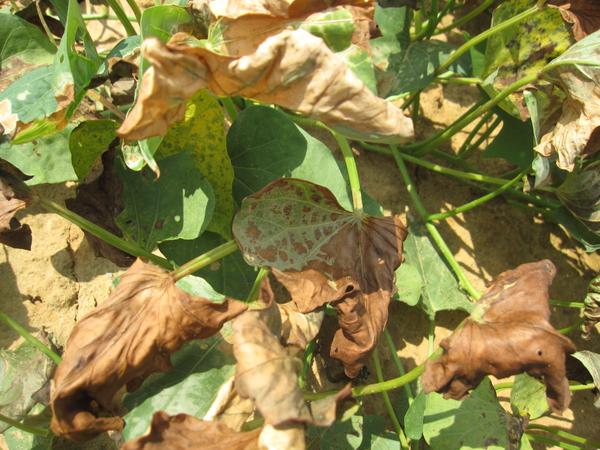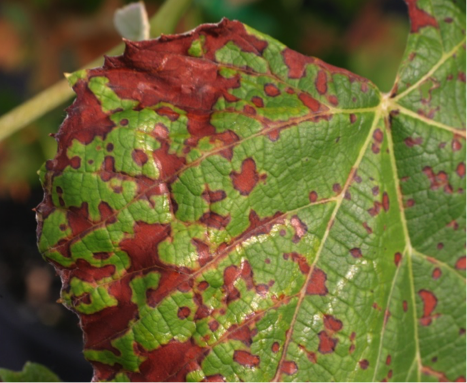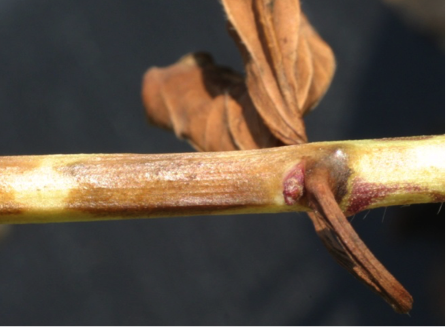Problem
Herbicide injury caused from photosystem I (PS I) inhibitors including (bipyridilium herbicides) paraquat (Cyclone, Gramoxone) and diquat (Reglone, Reward). These are non-selective, contact-acting herbicides producing rapid necrosis of contacted plant tissues.
Symptoms
- Non-selective necrosis of plant foliage.
- Leaf water-soaking on all treated tissues within hours of treatment.
- Necrosis of contacted foliage within 4 to 6 hours.
- Spotting and necrotic lesions on fruit contacted by the spray droplets.
- High doses applied to the stem of plants can cause stem cankers even in woody plants.
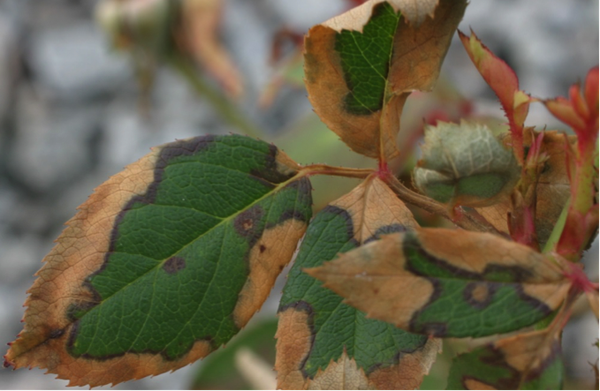
Diquat spray drift on knockout rose, 2 weeks after treatment. Note new growth emerging unharmed.
J. Neal CC BY-NC-SA 4.0

Diquat directed application to cryptomeria japonica caused necrosis of contacted foliage but growth not contacted by the spray was unaffected.
J. Neal CC BY-NC-SA 4.0
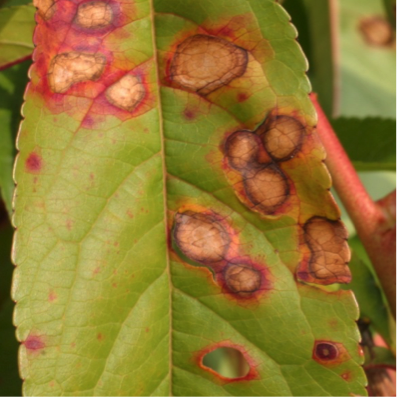
Diquat spray drift on peach foliage, 2 weeks after treatment. These spots turned necrotic then "dropped out" leaving "shot holes.".
J. Neal CC BY-NC-SA 4.0
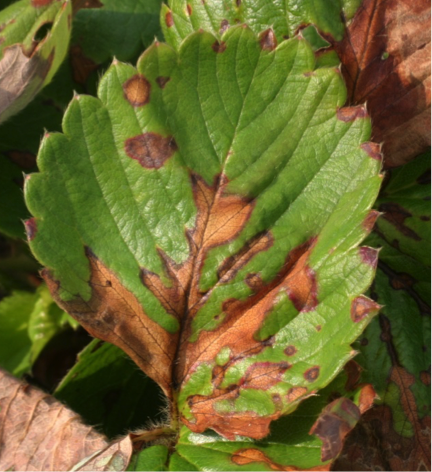
Diquat spray drift on strawberry, 2 weeks after treatment. Deep veins on the leaves acted as "troughs" where spray droplets collected resulting in what appears to be veinal necrosis.
J. Neal CC BY-NC-SA 4.0
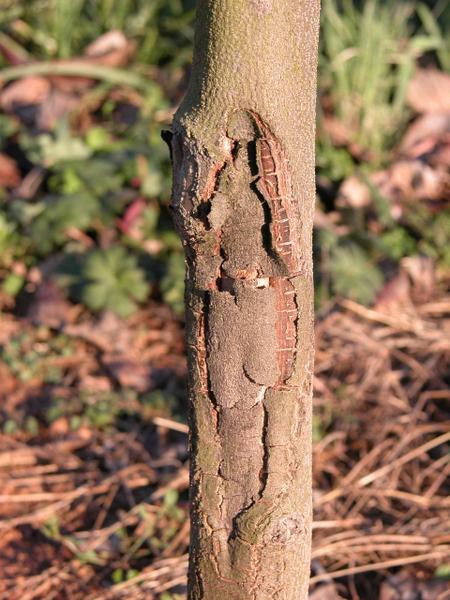
Excess doses of paraquat can cause bark damage to thin-barked trees such as this dogwood.
J. Neal CC BY-NC-SA 4.0
Plant Entry and Symptom Expression
Foliar applied, nontranslocated contact herbicides causing rapid destruction of cell membranes. PS-I inhibitor herbicides do not have soil residual activity. Photosystem I inhibitor injury symptoms are visible on all treated tissues within hours of application and plant death within one to two days. Increased speed of PS I activity in bright sunlight, high humidity and/or moist soil. Amount of tissue necrosis on treated plants depends on the amount of spray contact – leaf spot when small amounts of drift occur; necrosis of leaves and green stems with sufficient spray coverage.
Similar Problems
PS I inhibitor injury may be confused with symptoms from:
- Bentazon and bromoxynil (PS II rapid action) cell membrane destruction.
- PPO inhibitor herbicides (such as acifluorfen flumioxazin, and lactofen).
- Glufosinate (glutamine synthetase).
- High salt concentration resulting in desiccation.
- Drought related leaf necrosis.
- Excess concentration of crop oils, surfactants and other spray adjuvants.
- Gasoline, diesel fuel and other petroleum products may also display contact herbicide symptomology.
Herbicide Mode of Action Category
WSSA – 22
HRAC – D
Useful Resources
North Carolina Agricultural Chemicals Manual
Southern Region Small Fruit Consortium
Southeastern US Vegetable Crop Handbook
Weed Management in Nurseries, Landscapes & Christmas Trees Information Portal
Herbicide Handbook, Weed Science Society of America
Applied Weed Science: Including the Ecology and Management of Invasive Plants (3rd Edition), Merrill Ross & Carol Lembi, pages 165, 170-172.
Publication date: Sept. 10, 2015
Recommendations for the use of agricultural chemicals are included in this publication as a convenience to the reader. The use of brand names and any mention or listing of commercial products or services in this publication does not imply endorsement by NC State University or N.C. A&T State University nor discrimination against similar products or services not mentioned. Individuals who use agricultural chemicals are responsible for ensuring that the intended use complies with current regulations and conforms to the product label. Be sure to obtain current information about usage regulations and examine a current product label before applying any chemical. For assistance, contact your local N.C. Cooperative Extension county center.
N.C. Cooperative Extension prohibits discrimination and harassment regardless of age, color, disability, family and marital status, gender identity, national origin, political beliefs, race, religion, sex (including pregnancy), sexual orientation and veteran status.

